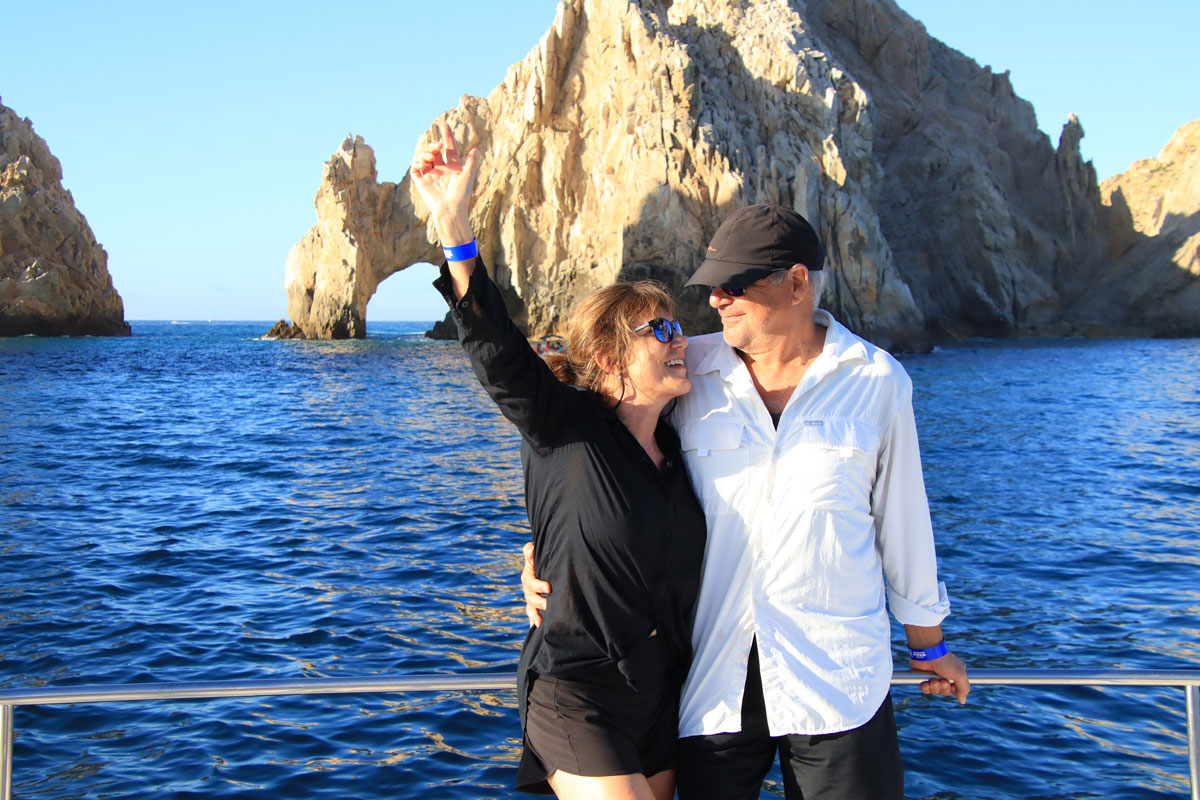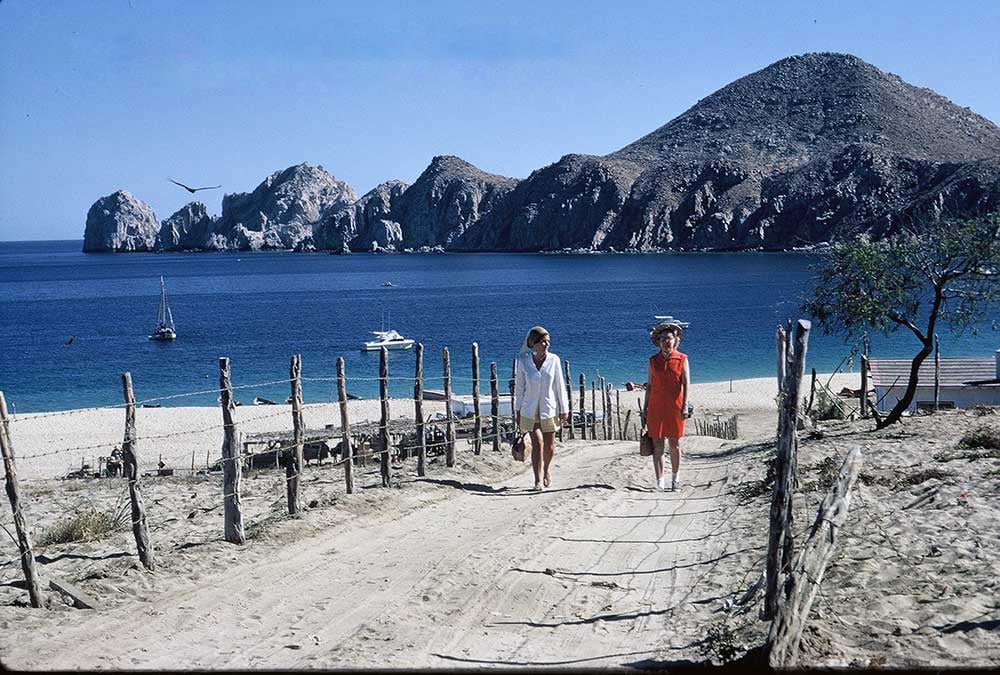Old Cabo History: Wow, How it’s Changed!
We’ve been coming to Los Cabos for over two decades – watching it shift from a laid-back beach escape into a splashy hotspot of mega-resorts, poolside margaritas and celebrity sightings.
But its allure goes back much further.
As long-time Cabo lovers, we’ve been curious about how it all began. So we dug into Cabo’s past – and even connected with some who knew it long before the crowds arrived.
One turning point came in the mid-1900s, when the son of a Mexican president and his movie-star wife built an ultra-exclusive seaside ranch and the original Palmilla Hotel, welcoming jetsetters. (Just one fun Cabo fact!)
Fast forward to 1970 – when Beverly Parsons sailed into sleepy Cabo in 1970 on the Shady Lady. She shared some vintage photos for this article – and her love story with the yacht’s captain was recently featured in CNN Travel.
But we’re getting ahead of ourselves. Let’s rewind the tape. Spoiler: It’s not just the tequila that’s aged well!
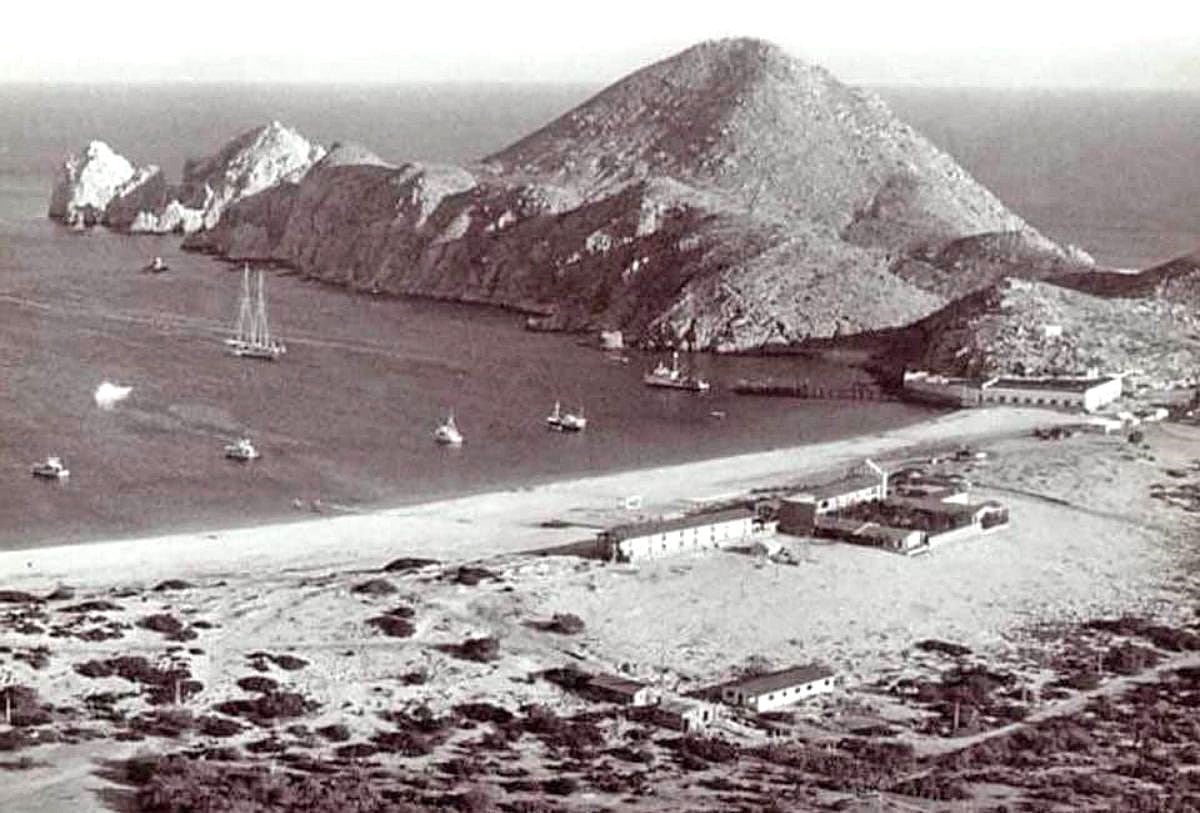
Before the beach clubs: Cabo’s earliest inhabitants
The early history of Cabo San Lucas and the surrounding area stretches back some 11,000 years.
Nomadic Indigenous groups called this rugged land home. They lived in rock shelters, painted their bodies, hunted desert animals and fished the rich waters of the Sea of Cortez – which Jacques Cousteau later famously called “the world’s aquarium.”
Pssst! You can still see traces of this indigenous legacy in ancient cave paintings – figures of people and deer pierced with arrows – hidden in Baja’s rocky hillsides.
Pirates, pearls and failed conquests
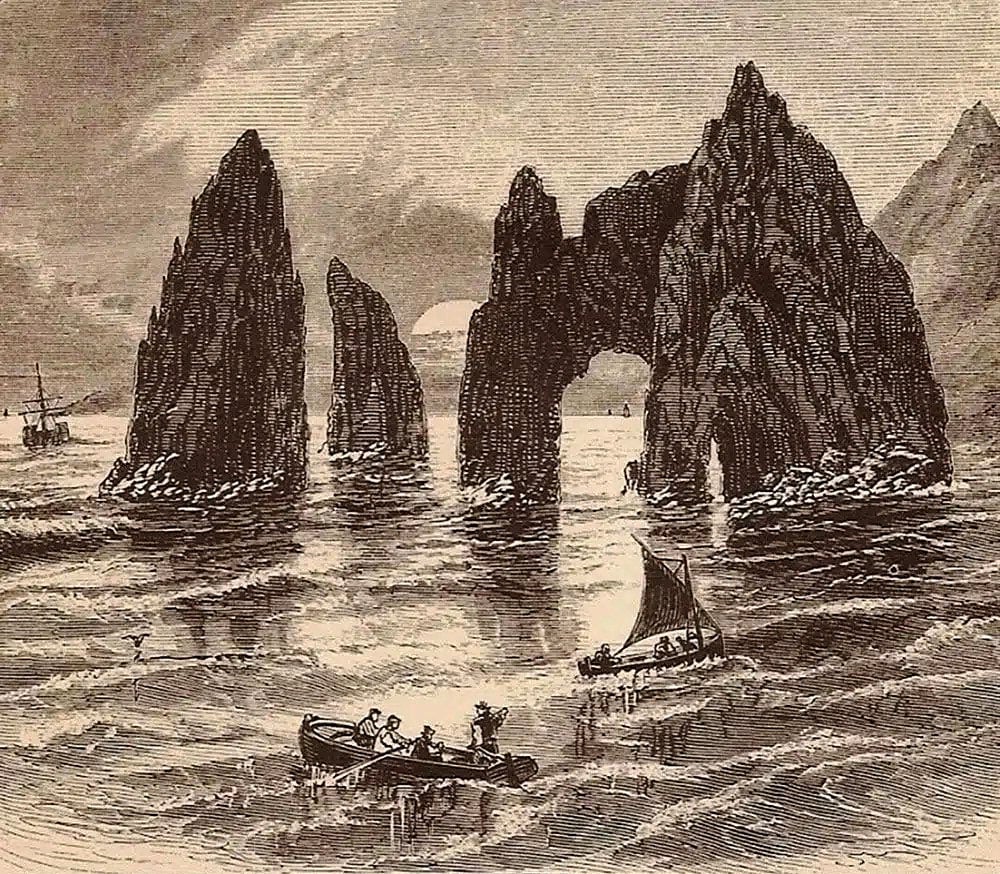
In 1535, Spanish conquistador Hernán Cortés arrived in Cabo with dreams of founding a colony.
But the harsh desert landscape wasn’t exactly a farmer’s paradise. With crops failing and starvation looming, Cortés and his men eventually gave up and headed back to Spain.
Enter the golden galleons
Then the real drama began – cue the pirates!
During the 16th and 17th centuries, Spanish treasure ships (known as Manila galleons) sailed the Pacific, packed with riches from the Philippines. Cabo’s iconic El Arco and the rocky coastline around Land’s End provided perfect hideouts for English pirates ready to pounce.
Sir Francis Drake drops in
The British adventurer and privateer Sir Francis Drake even briefly stopped at the southern tip of Baja after attacking Spanish ports and ships.
The heist of the 16th century
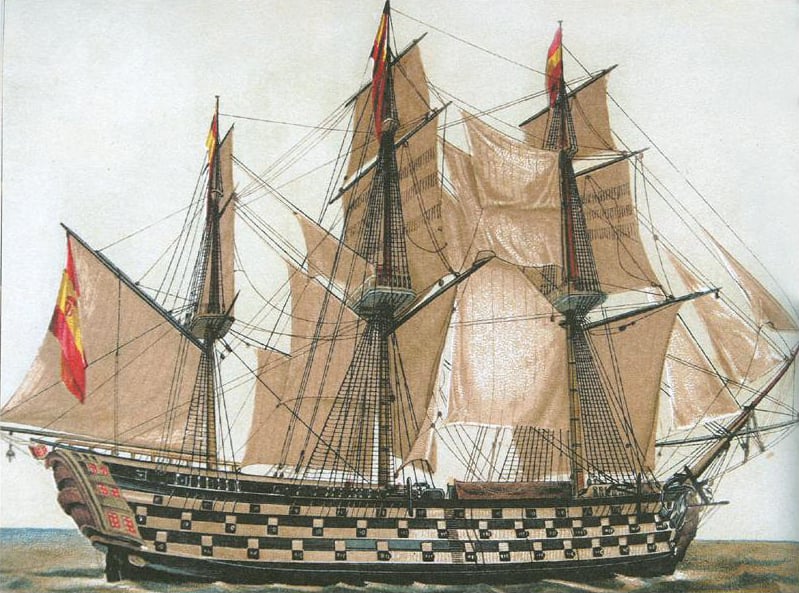
But it was Thomas Cavendish who made pirate history in Cabo in 1587.
He captured the massive 700-ton Spanish galleon Santa Ana, said to be “the richest ship to ever leave the Philippines.” It was so overloaded with treasure – gold, pearls, perfumes, precious silks and spices – that it couldn’t carry cannons.
Cavendish plundered what he could, loaded the loot onto two smaller ships, and set sail for England.
But only one ship ever made it back. The other, the Content, vanished without a trace.
Lost treasure (maybe!) beneath the waves
Legend has it that the Content sank just north of Cabo San Lucas, its riches still waiting to be discovered beneath the sea.
Missionaries with a mission (and a struggle)

In the 1600s and 1700s, Jesuit missionaries showed up in Cabo hoping to spread Christianity. They built a few missions – some of which you can still see today, like the Mision Estero de las Palmas in San Jose del Cabo (built in 1730).
But the land wasn’t exactly welcoming, and the Indigenous tribes didn’t always embrace the newcomers’ message.
Let’s just say converting Cabo wasn’t a walk on the beach.
Gold, silver and tuna?
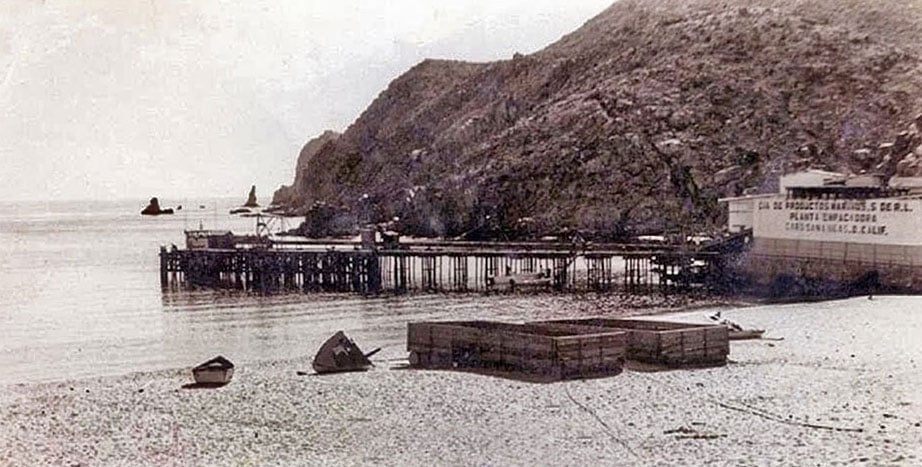
Fast forward to the 1800s, and Cabo began attracting interest for its mineral wealth, mostly gold and silver. But for locals, the real livelihood came not from the mines, but the sea.
Between 1927 and 1977, the Elias Pando Tuna Packing Plant was one of the town’s few major employers.
At its peak, it was the largest cannery in Latin America, cranking out about 75% of Mexico’s canned seafood. A small community of extended families grew up around it in Cabo San Lucas.
(Before the plant, a four-masted cannery ship anchored near El Arco, where cruise ships anchor today. It was supplied by rowboats and jigging skiffs bringing in the daily tuna haul.)

Pssst! Heading out on a boat trip from the marina? You can spot the old cannery ruins off Cannery Beach – a salty little slice of Cabo history hiding in plain sight.
The Hollywood effect: Cabo’s “Golden Age” begins
By the 1940s and ’50s, Cabo still wasn’t on most travelers’ maps. But it was starting to cast its spell. Deep-sea fishing was the big draw.
Only the adventurous (and well-heeled!) could get here – think private yachts and chartered seaplanes. And, so, Cabo caught Hollywood’s eye.

Rancho Las Cruces: Where Old-Hollywood met Baja
In 1950, Don Abelardo Rodriguez (son of Mexico’s then-president) and William “Bud” Parr built Rancho Las Cruces, Baja’s original elite escape.
Tucked at the base of a remote arroyo near La Paz (about 100 miles from Cabo San Lucas on the Baja California Peninsula’s east coast), the private fly-in club had its own airstrip, pool, tennis courts and palm-shaded bungalows.
It quickly became the ultimate hideaway for Hollywood royalty and political powerhouses. John Wayne, Lucille Ball, Bob Hope, Bing Crosby, Desi Arnaz – even President Dwight Eisenhower – all came to fish and relax. Crosby loved it so much, he bought out Parr’s stake.
Although it briefly operated as a hotel, Las Cruces soon went back to being strictly members-only. (Today, it’s a wonderful hotel again, located in a secluded 10,000-acre slice of Baja paradise with seven miles of coastline.)
Enter Palmilla: Cabo’s first true hotel
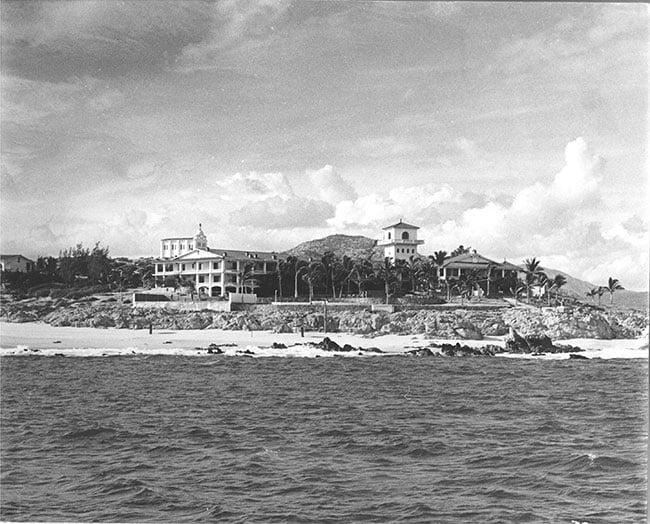
Rodriguez wasn’t done with Baja yet.
Smitten with the area (and maybe nudged by his Hollywood-actress wife Lucille Bremmer?), he scouted out a rugged 400-acre plot near what is now San Jose del Cabo.
Accessible only by yacht or helicopter, it was perfect for a next-level getaway.
In 1956, they opened the 15-room Palmilla Hotel. With Spanish colonial style and an ultra-private vibe, it drew a high-wattage guest list.
It was also about this time that the Mexican government shifted gears – deciding Cabo San Lucas would no longer be a cannery town, but a sportfishing and tourism hub. (A new cannery was later built in San Carlos at Magdalena Bay.)
The Palmilla Hotel set the tone for luxury tourism in Cabo. By the 1980s, it had grown to 53 rooms.
Then in 2004, it underwent a $90 million revamp to become today’s legendary One&Only Palmilla.
And the golf course that exists today? It used to be the hotel’s landing strip.
Pssst! We’ve stayed here and loved it! (See our Palmilla review.) Fronting Playa Palmilla, one of Cabo’s best swimming beaches, it’s still one of the most pampering retreats in the world.
A glimpse of what was coming
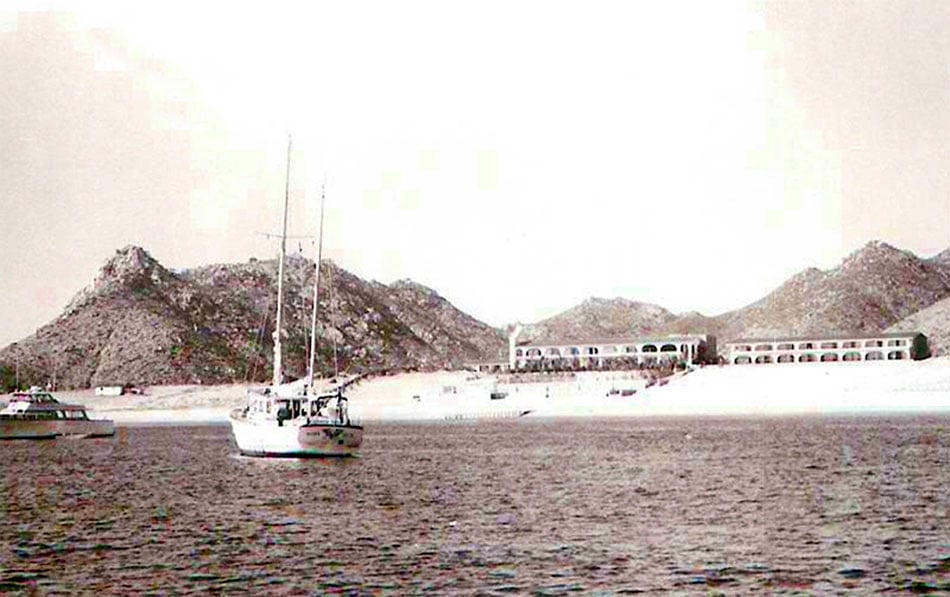
While Palmilla brought glam to San Jose del Cabo, the town of Cabo San Lucas got its first real hotel in 1966 – the Hotel Hacienda. Built by (you guessed it!) Rodriguez again, it sat right on Medano Beach with postcard-perfect views of Land’s End.
(We still remember the old Hacienda before it was torn down in 2005 to make way for the new Hacienda Beach Club & Residences. Back then, the property was like a lush oasis, packed with towering palm trees.)
Anyway, after the Hacienda, a few more hotels popped up in the early ’70s: Mar de Cortez (1972), Finisterra (1972), Solmar Suites (1977) and the original Twin Dolphin (1977).
At the time, Cabo’s marina didn’t even exist. It was just a dry mudflat with a landing strip and a scattering of cannery worker homes.
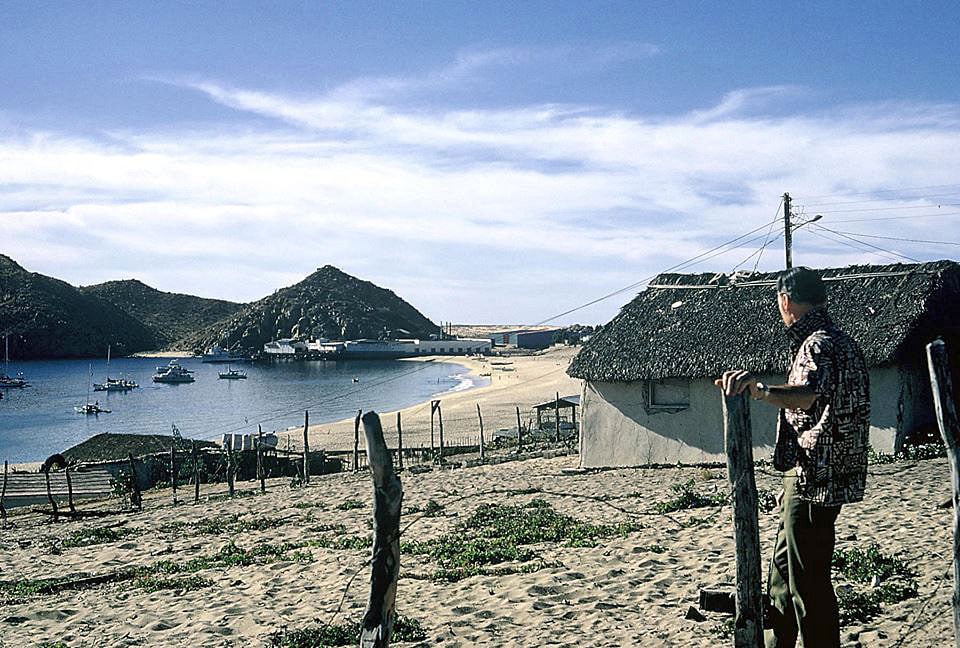
A yacht, highway, marina, ferry, airport – and tourists
Each new hotel brought a trickle of wide-eyed travelers.
The Shady Lady… and a love story
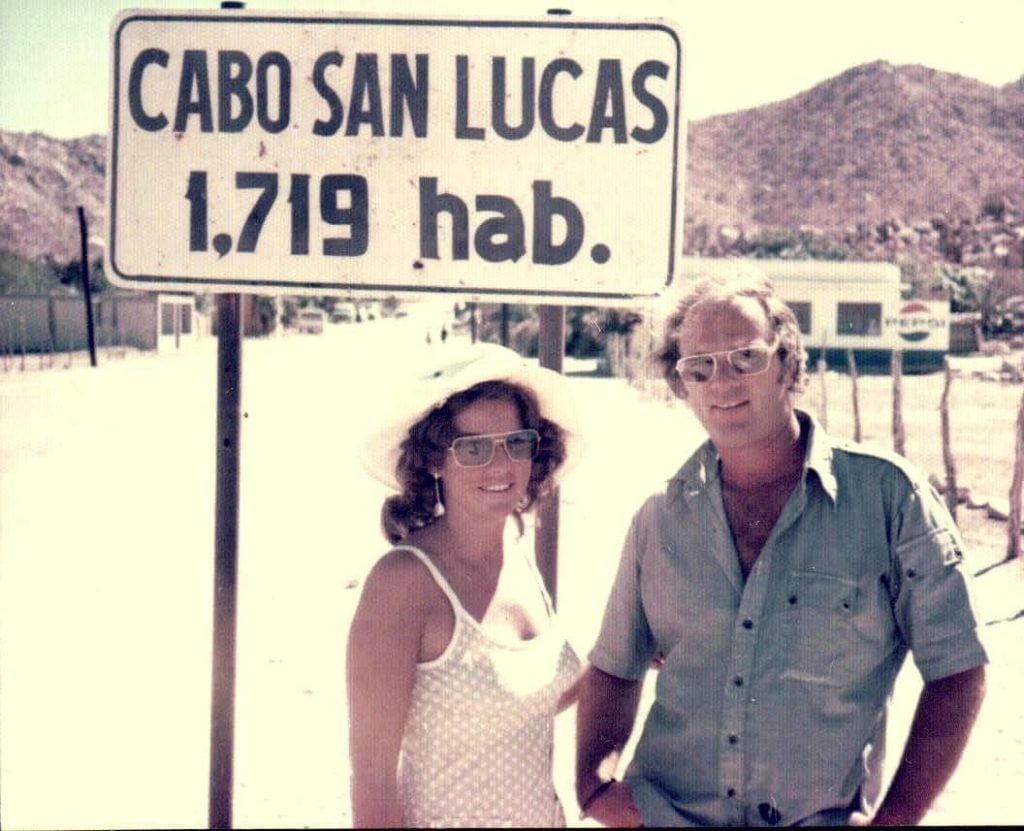
Among the early arrivals were Beverly and Bob Parsons.
In the summer of 1969, Beverly (a young Canadian) met Bob in Mazatlan. He was an American yacht captain who managed movie-star Jerry Lewis’ boat, Shady Lady (formerly Pussy Cat 2).
The two fell in love, got married, and soon after, the Shady Lady entered Cabo San Lucas Bay in 1970.
Living on the yacht wasn’t an option for the young married couple, so they rented a house on Medano Beach. “Bob was just a dinghy ride away from the boat. It was right in front,” Beverly recalls.
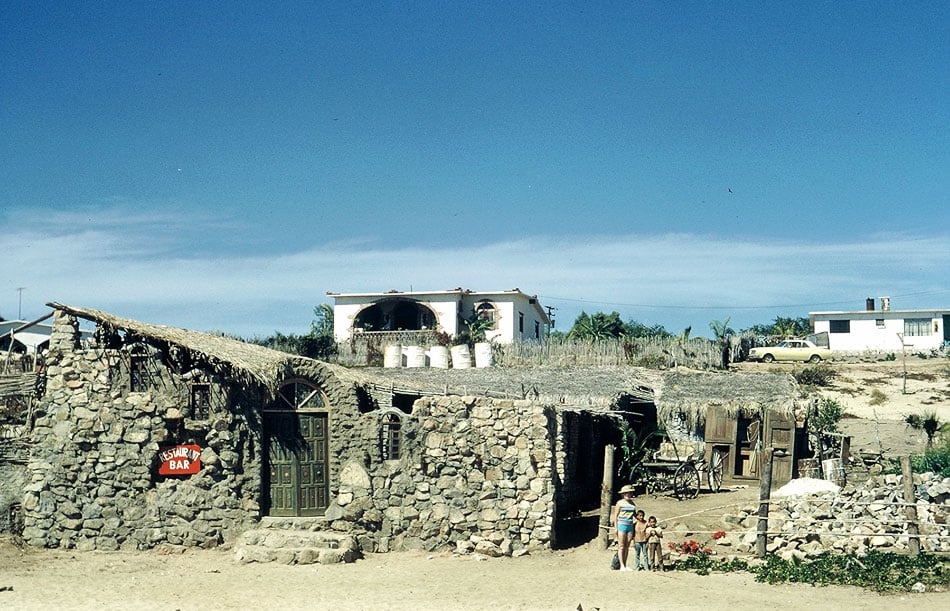
Pssst! We’ve had the pleasure of connecting with Beverly through her Facebook group dedicated to vintage Cabo photos. Several of the vintage photos in this article were taken by her. And her and Bob’s love story, which blossomed into 52 years of marriage, was just published in CNN Travel.
The road that changed everything
In 1974, the Transpeninsular Highway (Federal Highway 1) was completed, allowing tourists to drive the full length of the Baja California Peninsula.
Suddenly, it wasn’t just wealthy anglers, celebs and the adventurous visiting. Middle-class road trippers in VW vans and RVs also came.
That narrow two-lane road sparked a peninsula-wide tourism boom, with roadside taco stands, motels and campgrounds popping up from Tijuana to Todos Santos. For many Baja families, the highway brought their first taste of prosperity.
The marina digs in
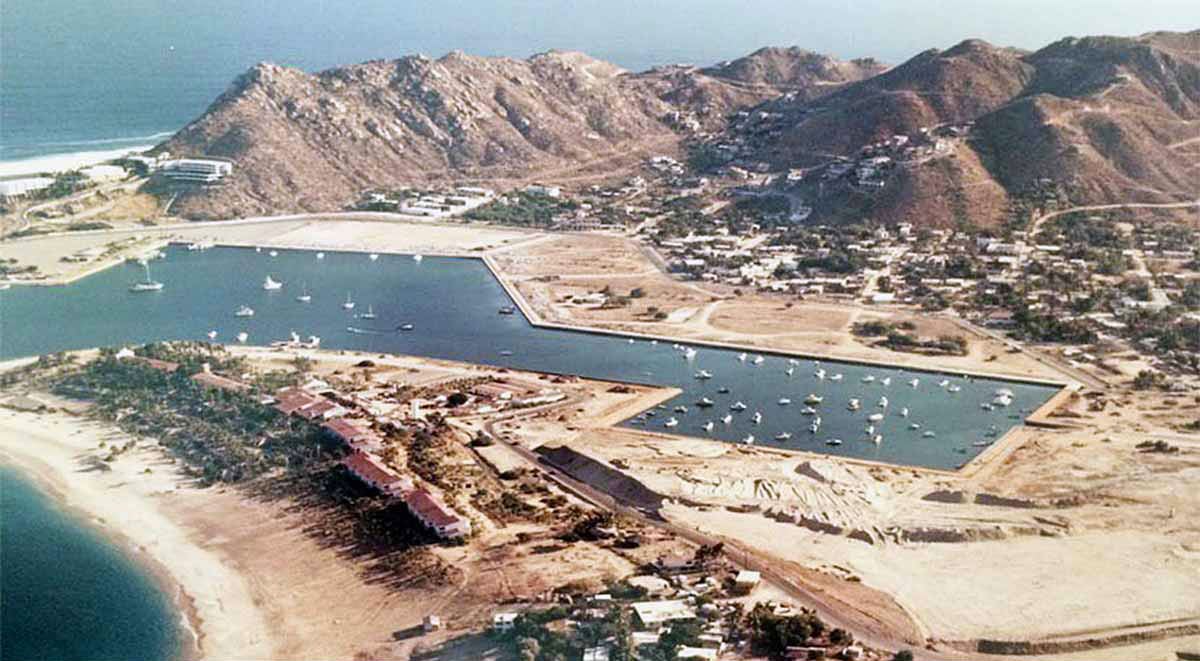
Cabo’s marina was dredged between 1974 to 1975, transforming the sandy flats with its airplane landing strip into a hub for yachts, fishing charters and future waterfront hotels.
Ferry from Puerto Vallarta
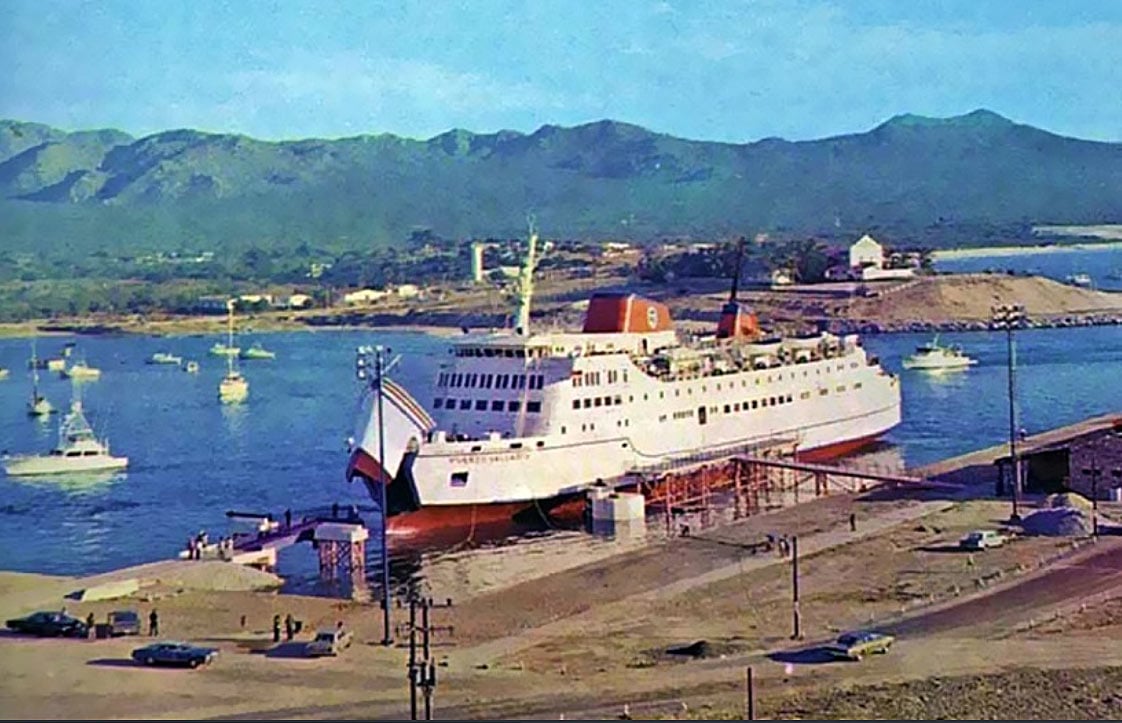
It’s hard to believe now, but there was once a ferry that ran between Puerto Vallarta and Cabo San Lucas – the MV Puerto Vallarta.
A German-built vessel delivered to Mexico in 1974, it offered a unique maritime link to the mainland (also serving routes to La Paz), before the service was discontinued in 2005.
A modern airport for a growing destination
Then in 1977, the Los Cabos International Airport in San Jose del Cabo got a major upgrade, expanding its capacity to welcome thousands of passengers per day.
Cabo San Lucas’s evolution from sleepy fishing town to global getaway was officially in motion!
Pedregal: A dream carved into the hills
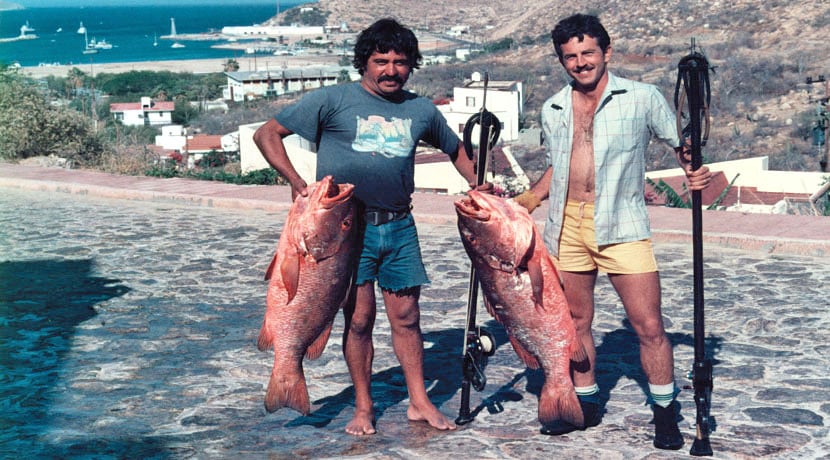
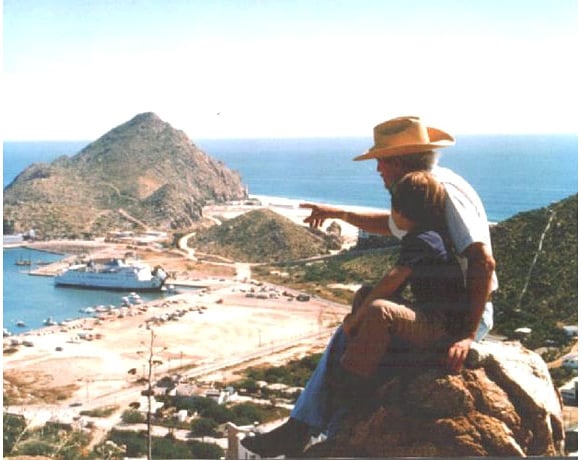
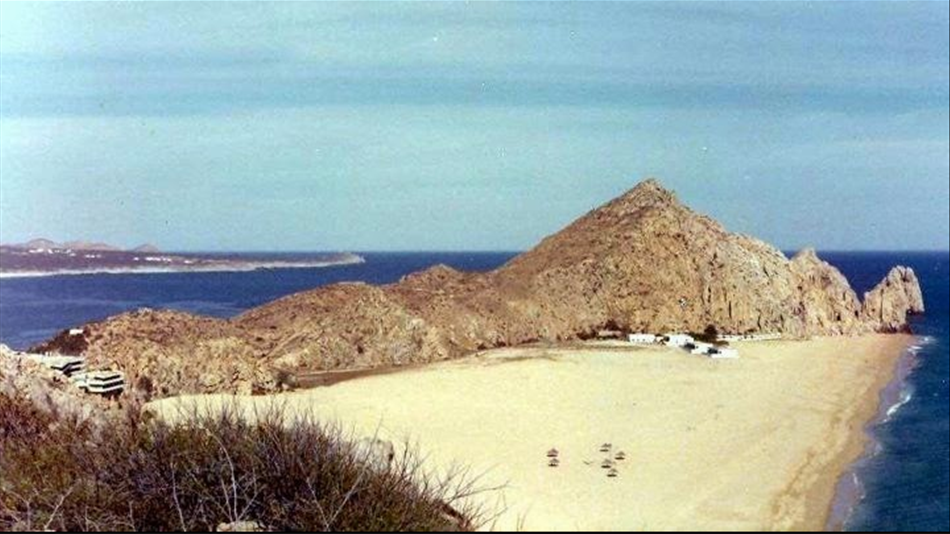
Around the same time, the story of Pedregal was taking root.
In December, 1973, architect Manuel Diaz Rivera and his family flew to Baja in search of a peaceful escape from Mexico City. After landing in La Paz – and spending the night at their taxi driver’s home because both of the town’s two hotels were fully booked! – they made their way to Cabo San Lucas.
A couple of months later, they returned. This time, they stayed at the just-opened Solmar Suites, where the hotel’s owner showed them plots of hillside land for sale.
Rivera’s daughter, Leticia Diaz Rivera, writes inThe Beginning of Pedregal: “Greatly excited, we decided to walk all over the mountain and like city kids brought no water with us. When we reached the beach we were beyond thirsty.”
Luckily, they discovered that barrel cactus holds enough moisture to survive the Baja heat!
Back in Mexico City, Diaz Rivera began sketching out a master plan, complete with streets, parks, lookout points and everything needed for a future hillside community. On September 8, 1975, the first stone of Pedregal de Cabo San Lucas was placed.
Today, Pedregal is the epitome of exclusive coastal living, where cobblestone roads wind around luxury villas with sweeping ocean views.
Pssst! We’ve walked the neighborhood several times, all the way to the top – it’s one of our favorite ways to sneak in some cardio exercise in Cabo! (But these days, you have to get past the security guards and find a gate that’s open.)
Enter Sammy Hagar and Cabo Wabo: Rock ’n’ roll meets tequila
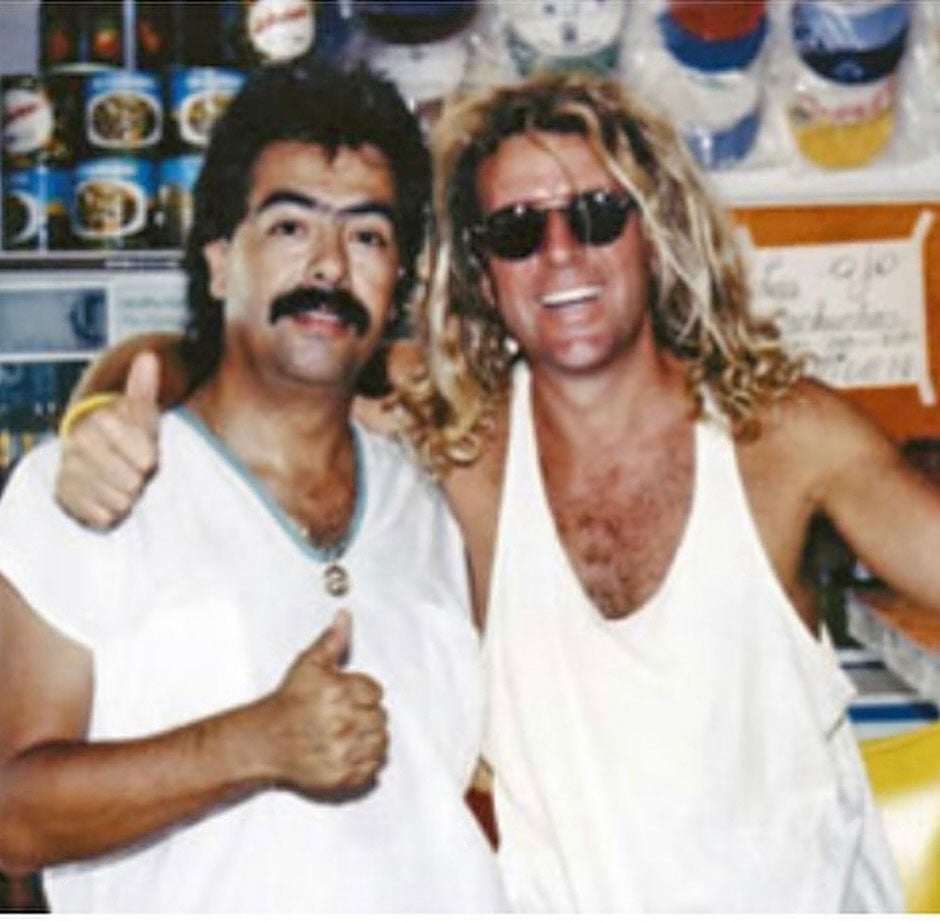
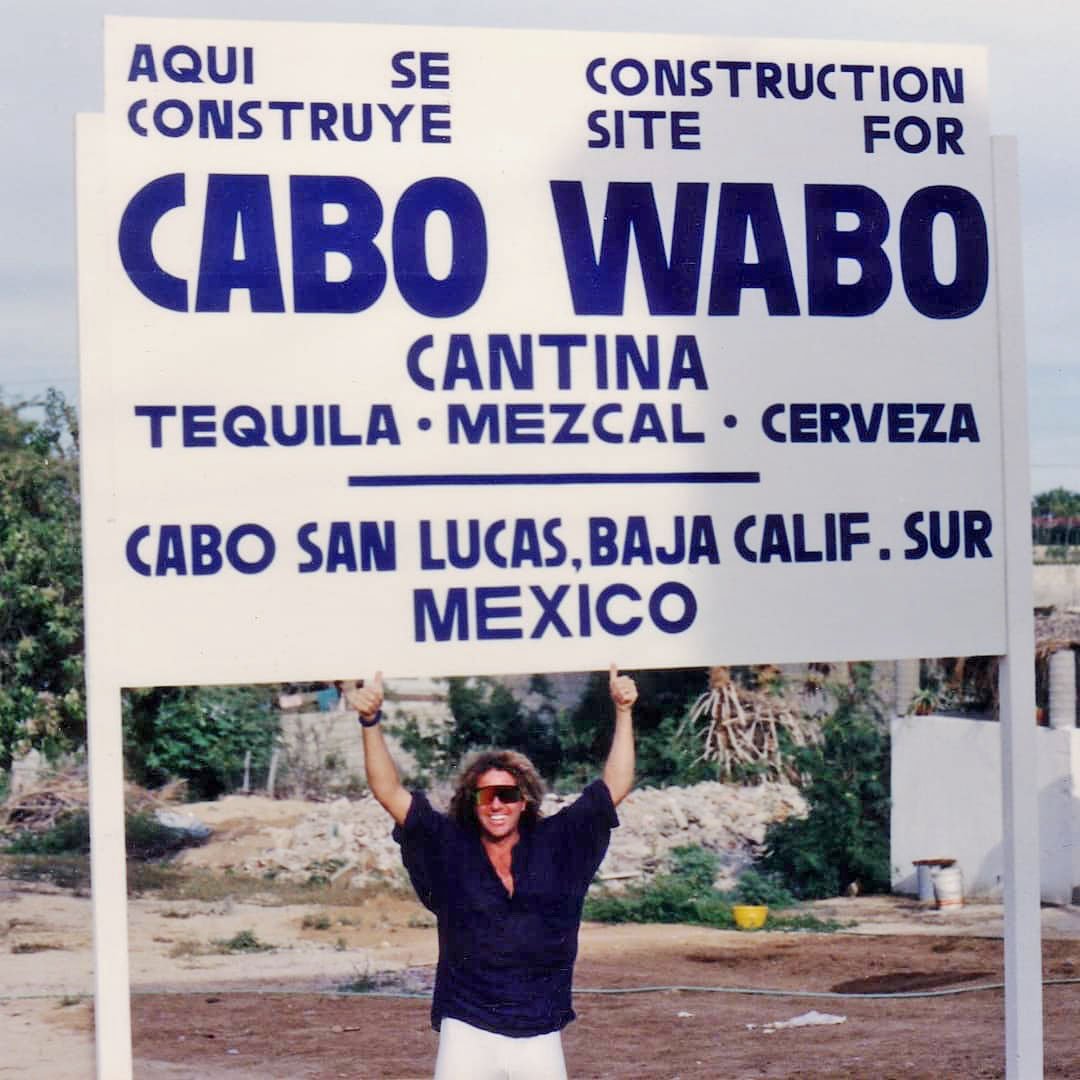
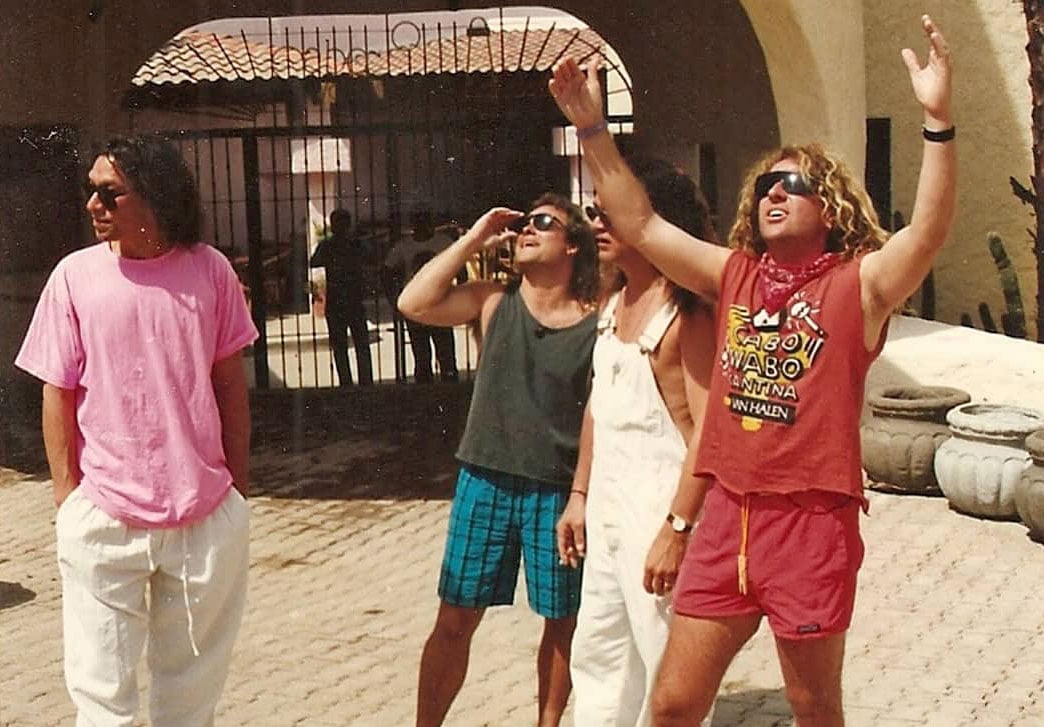
When Sammy Hagar first rolled into Cabo San Lucas in the early 1980s, Cabo had no phones, no TV, no newspapers. In Sammy’s words: “I fell in love with the town.”
Then in 1990, Hagar – now lead singer for the heavy metal Van Halen band – decided he needed a place to rock out whenever the mood struck. So he and his bandmates opened the Cabo Wabo Cantina – a tequila bar, live music venue and a bold dream rolled into one.
At the time, Cabo was still too sleepy for such a flashy nightclub – and it flopped at first.
But Sammy didn’t quit. He bought out his bandmates, stuck with it and watched Cabo take off.
Cabo Wabo today is a full-blown brand. It’s spun off into a best-selling tequila and a Las Vegas outpost.
But the original club in Cabo is still the heart of it all. With nightly live music and surprise celeb cameos, you never know who’ll show up on stage. Sammy himself still returns for his epic “birthday bashes.”
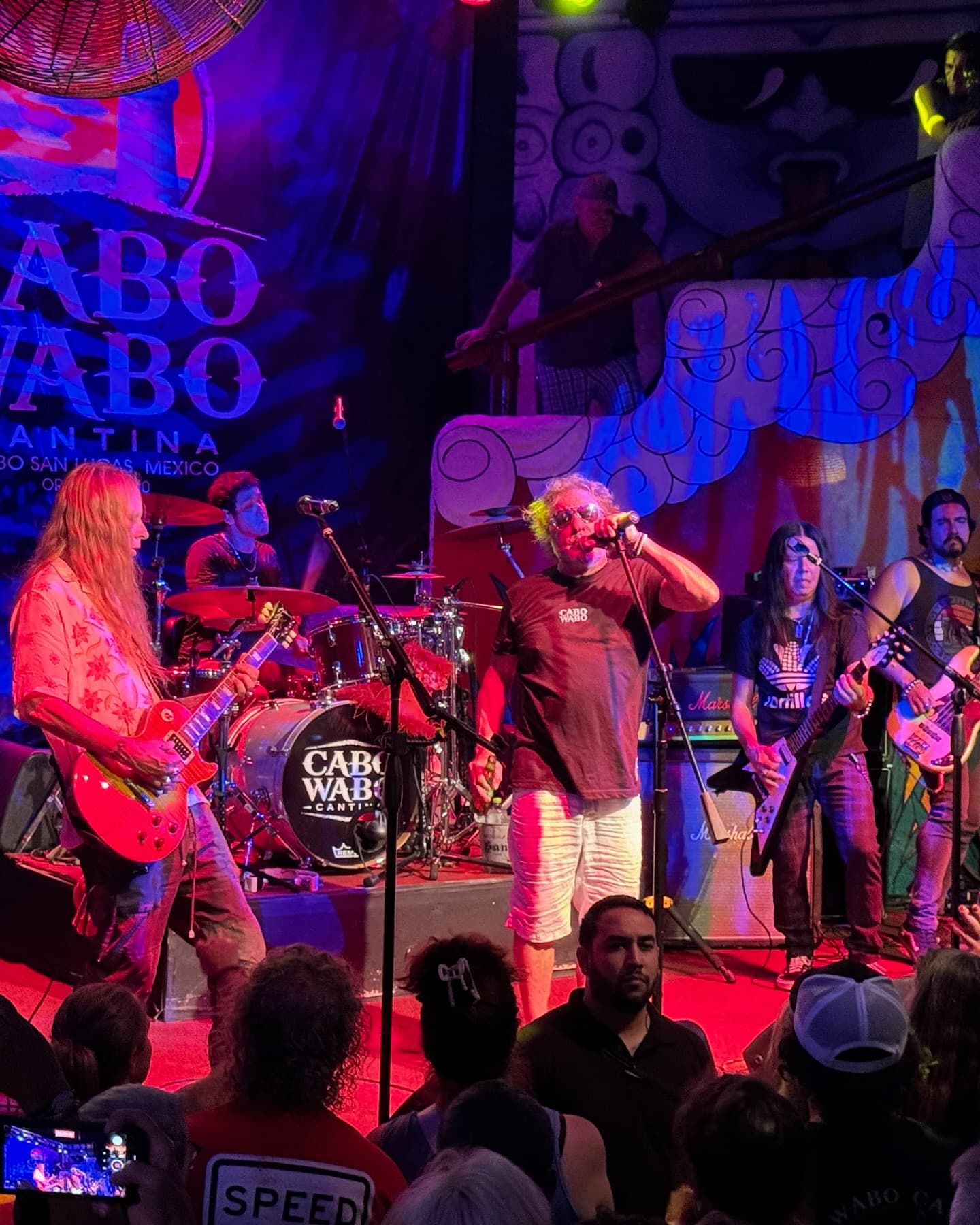
Boomtown: Cabo in the ‘90s and beyond
By 1990, the area was transforming fast. Condos, resorts and private homes sprung up everywhere. Hotel chains like Melia, Posada Real and Fiesta Inn joined the scene.
Cabo San Lucas had officially arrived.
Hurricane Odile and the resilient Cabo spirit
In 2014, Hurricane Odile devastated Cabo. It tore off roofs, flooded roads and buildings, downed palm trees and caused $1.6 billion in damage. The storm killed several people, injured more than 135 and stranded thousands of tourists.
But Cabo bounced back.
The One&Only Palmilla reopened in 2015, more polished than ever.
Our own timeshare club resort’s buildings, made mostly of white stone, lost their thatched roofs – but their structures held strong. Insurance covered the damage, renovations improved it and we were back visiting a couple of years later.
Some other properties weren’t as lucky. The Westin Los Cabos near San Jose del Cabo sat empty for years, tied up in insurance disputes and a change in ownership structure. We know timeshare owners who lost their interests.
Today, unless you’re a longtime visitor, you’d never guess such a storm ever hit Cabo.
Final thoughts: A love letter to Cabo
Cabo has changed – wildly, wonderfully, and at times, overwhelmingly.
But the reasons we fell in love with it in the first place haven’t disappeared. The natural beauty is still breathtaking. The locals remain as warm and welcoming as ever. And the mix of sheer escapism and adventure (from scuba diving at Cabo Pulmo to hiking in Fox Canyon) is as potent as ever.
And if you squint past the swim-up bars and infinity pools, you’ll still find Cabo’s old soul – in a humble taco stand, the sea lions barking around Land’s End and the way the sun melts into the Pacific behind the rock Arch.
Cabo’s journey has been one epic tale. After more than 20 years of visits, we’re still not done writing our own Cabo chapter.
Discover more of Cabo today
- 9 Swimmable Beaches in Cabo (and Why Others are Unsafe)
- 10 Super Cool Private Boat Tours
- 10 Day Trips From Cabo You’ll Totally Love
- From Beaches to Rooftops: 9 Epic Places to Watch the Sunset
- Cabo’s Top 5 Hotels With Swim-Up Rooms
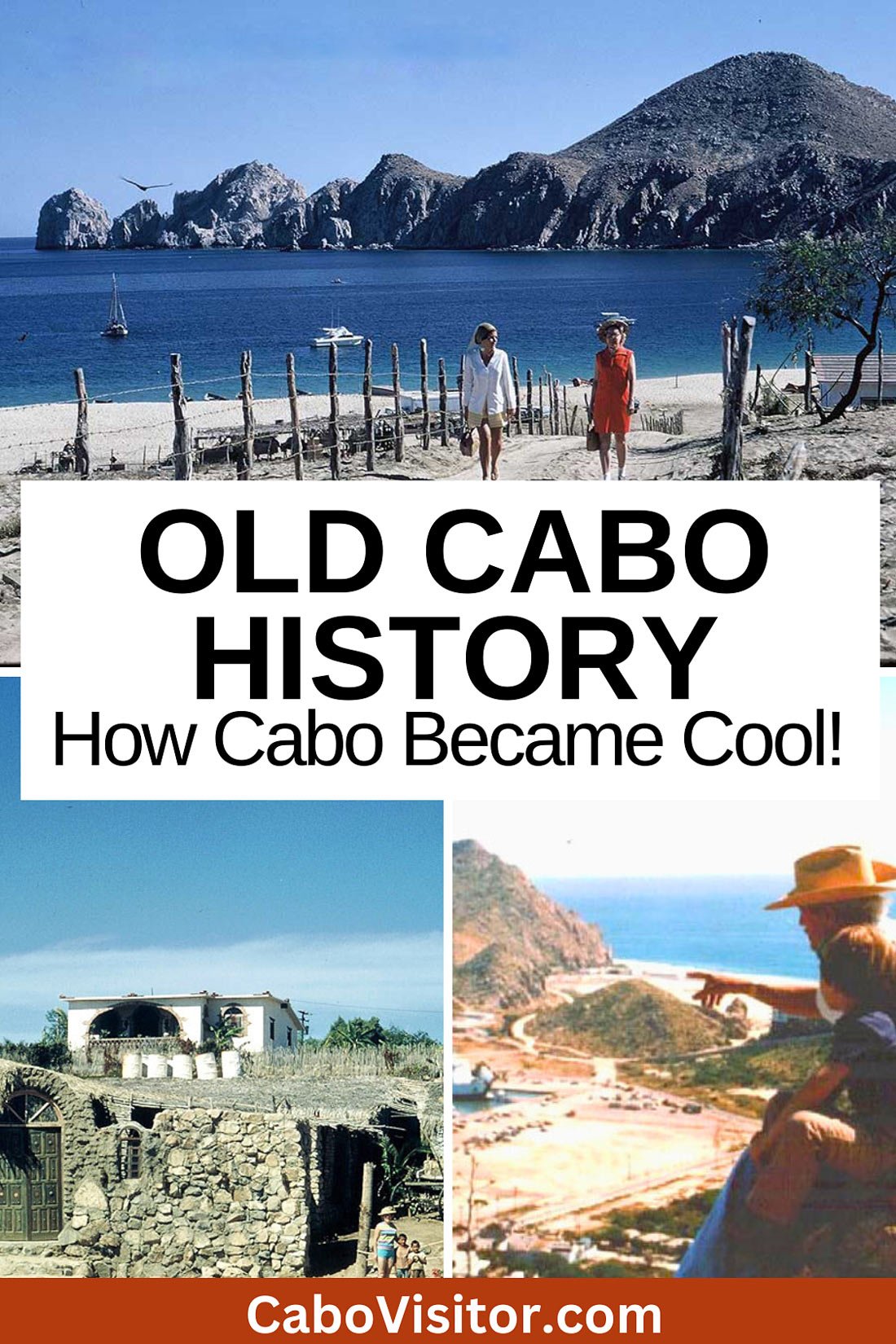
Our favorite resources for planning a trip to Cabo
Resorts: Booking.com is great for scoring a “wow” hotel in Cabo – or at least a decent one. (We especially like their flexible cancellation policy!) Expedia is also worth checking for discounted hotel rates in Cabo.
Vacation homes, condos and rentals: We prefer and use Vrbo (Vacation Rentals by Owner).
Tours: For the best local guided tours in Cabo, see Viator and GetYourGuide.
Car rental: Renting a car in Los Cabos is one of the best ways to explore. Discover Cars searches car rental companies so you get the best rates.
Travel insurance: SafetyWing is designed for frequent travelers, long-term adventurers and digital nomads. It covers medical expenses, lost checked luggage, trip interruption and more. We also have and recommend Medjet for global air medical transportation and travel security.
Need more help?
- See our Start here page. It lists everything we’ve written on Cabo.
- Also check our ultimate Cabo travel guide and our article on Planning your Cabo vacation: What you should know.
Pssst! If you make a booking or purchase through our site, we may earn a small commission (at no cost to you). Thanks!
Photos: 1, Beverly Parsons
About the authors
